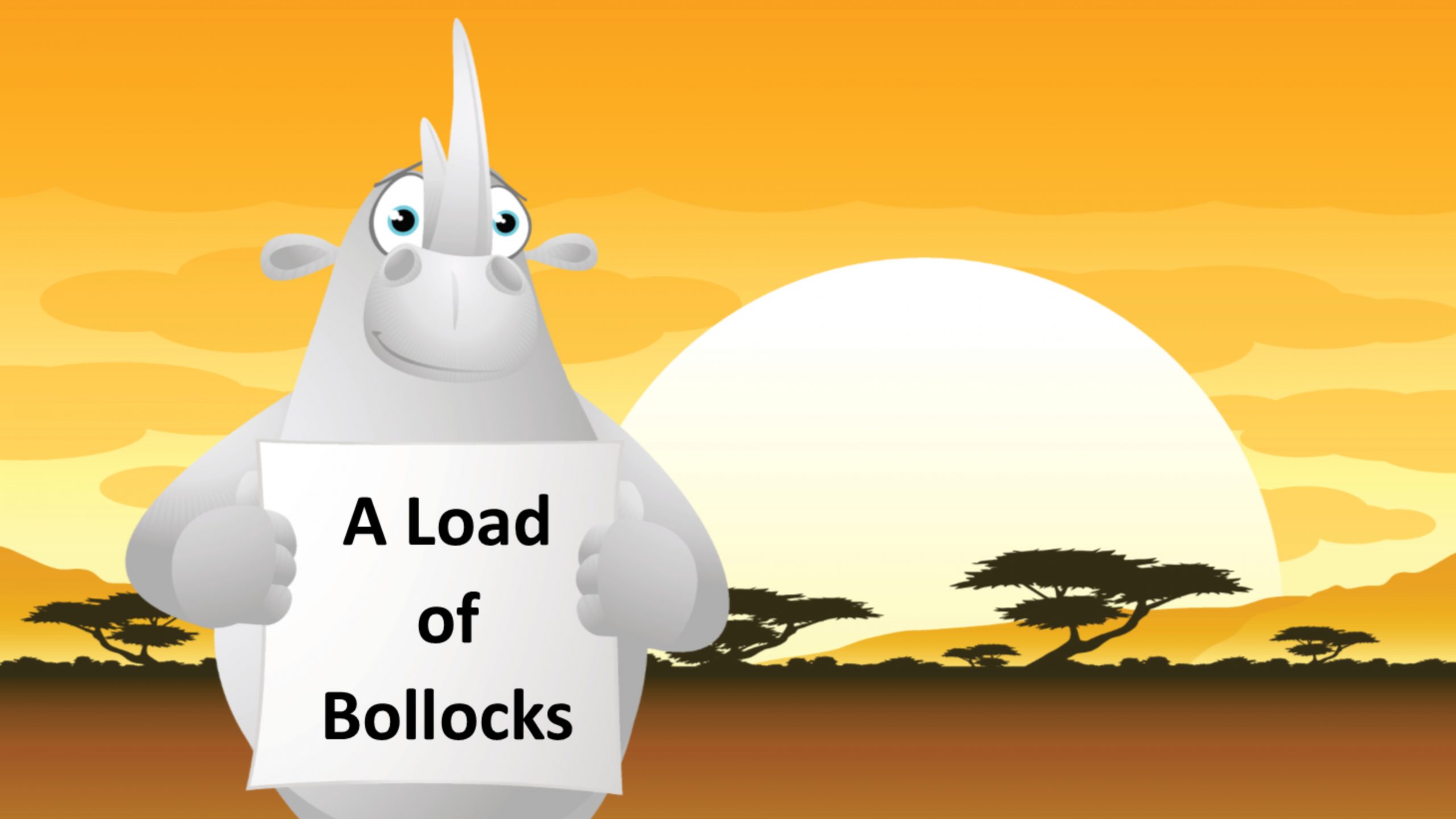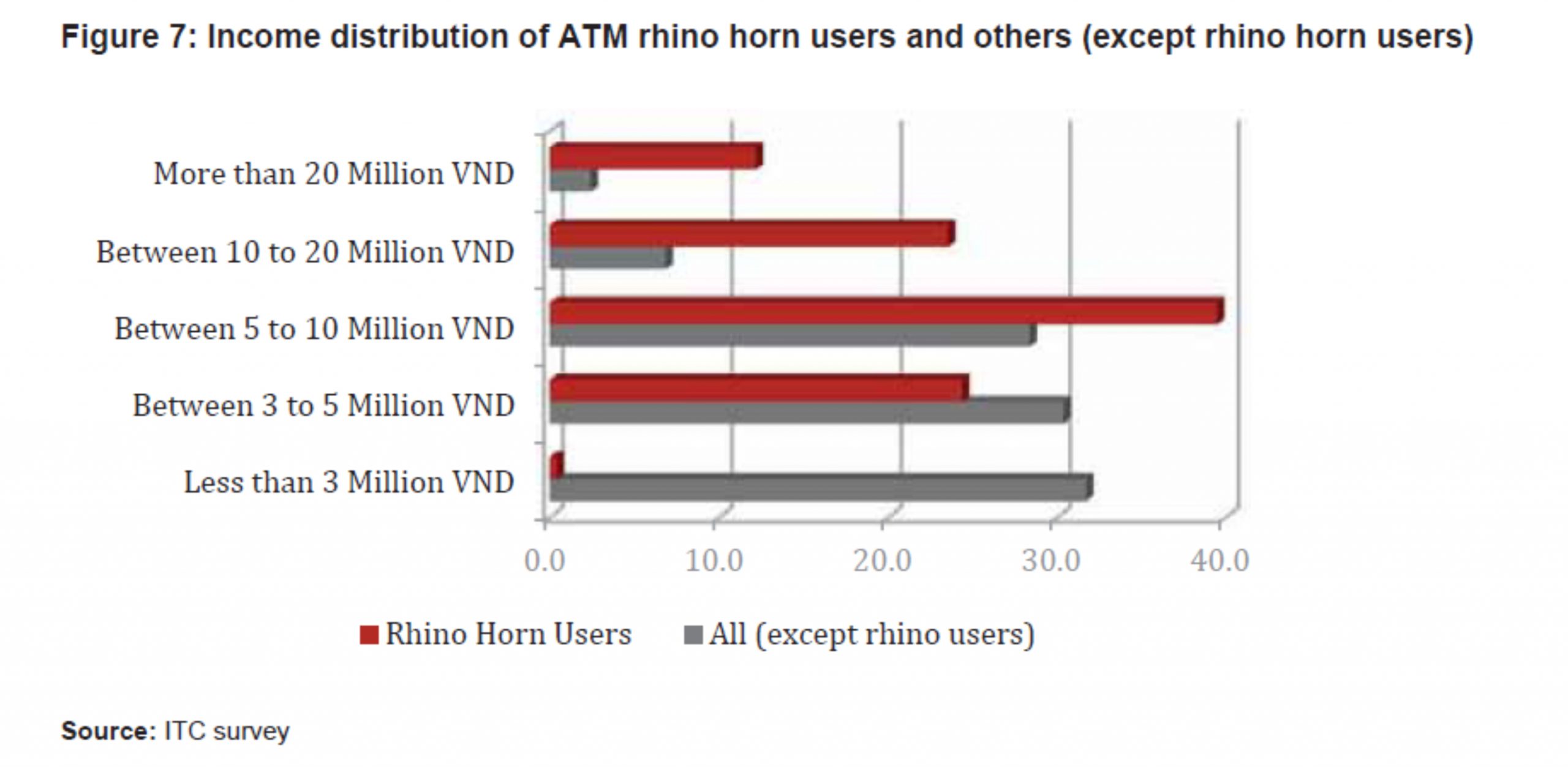
On 11 April 2017, the International Trade Centre published a paper titled: Demand in Viet Nam for rhinoceros horn used in traditional medicine.
The ITC paper focuses on Traditional Asian Medicine (TAM), not using rhino horn as a status symbol, which I will comment on later in the blog. It states that the ITC conducted a survey of 1,000 consumers of TAM, including 239 people who self-disclosed they used rhino horn.
So, the first questions must be:
- Did they interview the users of genuine rhino horn or those buying fake rhino horn?
- Just how relevant was their survey group to the trade/no-trade debate?
Now the paper itself states (page 54) that the price of illegally poached rhino horn [in Viet Nam] is US$8,400/100g. So, let’s look at the income of the group surveyed (page 12). Firstly, the publication conveniently omitted that this is income per [month], so what does that mean about the groups purchasing power for genuine rhino horn?

At today’s exchange rate:
20 Million VND/Month = US$882/Month
From ITC’s own data:

| Survey Participants Monthly Income Vietnamese Dong (VND) |
Survey Participants Monthly Income US dollars (US$) |
| 20 Million plus* | 50 people surveyed earned more (but we don’t know by how much more) than US$882/Month |
| 10 – 20 Million | 110 people surveyed earned between US$441/Month – US$882/Month |
| 5 – 10 Million | 310 people surveyed earned between US$220.50/Month – US$441/Month |
| 3 – 5 Million | 290 people surveyed earned between US$132.30/Month – US$220.50/Month |
| 3 Million | 240 people surveyed earned less than US$132.30/Month |
*Even TRAFFIC.org, when considering rhino horn demand, only survey participants in Viet Nam who earn more than US$1,500/Month (at today’s exchange rate that’s 34,013,605.44 VND). BTB has always maintained that even this monthly income is too low to make a person interesting for surveys of ‘genuine’ rhino horn demand: https://natureneedsmore.org/wp-content/uploads/2019/09/Breaking-The-Brand-Project-Campaign-Evaluation.pdf
So, remembering that the publication quotes that the price of illegally poached rhino horn [in Viet Nam] is US$8,400/100g, all the ITC can say is that some of the 50 people in the top income bracket surveyed MAY have a sufficiently high disposable income to afford illegally poached genuine rhino horn. They can’t prove if they surveyed anyone earning a sufficiently high monthly income to guarantee they were (consistently) buying genuine rhino horn in relevant quantities.
If you just look at the wealthiest monthly income quoted, then a person earning this would need to spend their entire monthly income to buy 10grams of rhino horn! How relevant do you think this group is to informing the trade/no-trade debate?
In summary:
- This publication provides data that is completely irrelevant to argue that there is a basis for trade, even though it implies that it informs the debate in a supposedly neutral manner.
- It surveys 1,000 people because that makes it look like a good sample size (but everything else shows it was not a relevant sample group).
- The 239 survey participants denoted as using rhino horn, were people who self-disclosed they used rhino horn. Yet the income levels of the survey group would indicate they are likely to be buying the 90% fake rhino horn that is sold in the Vietnamese market place and as such they are not a relevant group to survey.
- The publication only focuses on TAM and not status symbol/giving use, because the pro-trade groups like to imply that we shouldn’t challenge a 2000-year-old culture. They can’t use this argument if they acknowledge that the main use today is a recent, aspirational fad.
- Whilst the paper acknowledges the status component of the use, by virtue of the selection process they pretend it doesn’t matter to the users they surveyed. The buy for ‘medicinal purposes’ and ‘general wellbeing’. You can get the same type result by only interviewing people at pharmacies and health food shops in the West (which is effectively what they did in selecting the sample in Viet Nam).
I want to finish up by quoting something from the publication’s foreword “ITC is fully committed to providing objective, science-based evidence for policy.” I am hearing more-and-more of these types of statements, including from high profile conservation groups, as they try to shore up their credibility as their skills, models, ideologies and experience become increasingly less relevant to the illegal/endangered wildlife trade issues we face.
I’m a scientist by training, I love science. Although I have spent my working life in the private sector, in the early 1990s I completed my PhD in Particle Physics.
To those groups who quote this ‘objective, science-based evidence’ or ‘evidence-based approach’, I need to say it is a load of bollocks if your raw data isn’t relevant to the the body of knowledge or debate you are supposedly trying to inform.
These are the views of the author: Dr. Lynn Johnson, Founder, Breaking the Brand and Nature Needs More
